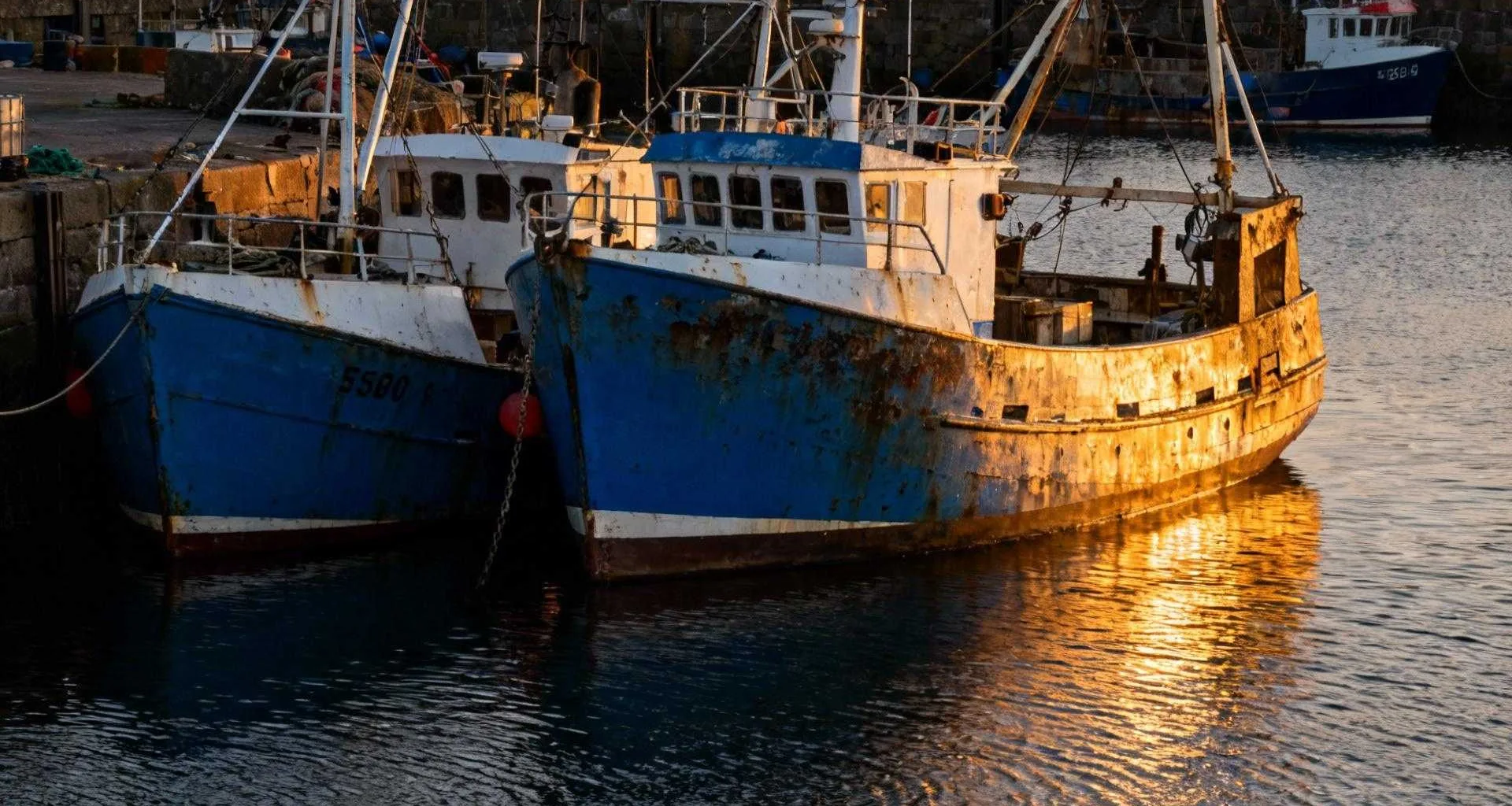At precisely 6 AM, when most of Scotland still sleeps, something extraordinary unfolds in this unassuming coastal town of just 19,060 residents. The thunderous calls of auctioneers echo through Europe’s largest fish market, where £257 million worth of seafood changed hands in 2024 alone.
Peterhead breaks every expectation of what a “tiny” place should accomplish. While tourists flock to Edinburgh’s Royal Mile, this working port quietly processes 219,269 tonnes of fish annually, making it the beating heart of Britain’s maritime economy.
The locals call it “The Blue Toon” – a nickname rooted in centuries of fishing heritage that reveals everything about this place’s authentic character. Here, tradition isn’t performed for cameras; it’s lived daily by families whose livelihoods depend on the North Sea’s bounty.
The market that outperforms entire countries
Record-breaking numbers that defy small-town logic
This tiny Scottish port handles more fish than many nations combined. The 2024 figures shattered previous records, with whitefish landings alone worth £100 million and pelagic stocks reaching £143 million. These aren’t just statistics – they represent the daily miracle of turning Scotland’s roughest waters into Europe’s most productive fishing ground.
Infrastructure investment that rivals major cities
The £50 million transformation includes a state-of-the-art fish market opened by Prince Charles in 2018, complete with ice factories and tide-independent landing facilities. This hidden Seattle neighborhood has better coffee than Pike Place shows similar authentic working communities, but Peterhead’s scale dwarfs most urban markets.
Why locals protect their Blue Toon identity
The 7 AM ritual tourists rarely witness
Every weekday morning, private wholesalers gather for auctions that determine seafood prices across Britain. The market opens exclusively to trade buyers, preserving an authenticity that mass tourism would inevitably destroy. This isn’t Santorini’s staged fishing boat photo ops – it’s real commerce with generational consequences.
Sustainability standards that shame larger ports
Peterhead earned distinction as the first UK port with Responsible Fishing Port status from Seafish, plus Marine Stewardship Council certification. While cruise ship destinations struggle with overtourism damage, this tiny port leads Europe in sustainable maritime practices, proving size doesn’t determine environmental responsibility.
The authentic Scottish experience hiding in plain sight
Cultural depth beyond Highland stereotypes
Forget Edinburgh’s £200 castle tickets and Highland Games performances. Peterhead offers genuine Scottish maritime culture where 30% of Scotland’s fishing value flows through daily operations. The Peterhead Prison Museum and dramatic coastal walks provide historical context without manufactured authenticity. The only British battlefield where Highland clans’ sacred graves still demand respectful silence preserves Scotland’s past, while Peterhead sustains its living future.
Access to Scotland’s easternmost secrets
Standing at mainland Scotland’s easternmost point, Peterhead offers unfiltered North Sea drama impossible to experience elsewhere. The coastline delivers raw beauty without Instagram crowds, where fishing boats battle genuine weather rather than performing for tourists. This authentic relationship with the sea shapes local character in ways no heritage center could replicate.
The tiny town with massive impact
Economic influence spanning continents
This compact port processes 19% of Britain’s entire fishing industry, with seafood reaching tables from London to Tokyo. The economic ripple effects prove that authentic places often wield influence far exceeding their physical boundaries. This English valley looks like Scotland’s lochs but hides Britain’s most controversial water story demonstrates similar hidden significance in unexpected places.
Investment patterns that signal recognition
The £50 million infrastructure commitment reflects confidence in Peterhead’s future importance. Major fishing companies recognize what travelers are beginning to discover – authenticity creates more sustainable value than manufactured tourist attractions ever could.
Peterhead challenges every assumption about travel priorities. While famous destinations struggle with overtourism and lost authenticity, this tiny Blue Toon quietly demonstrates that genuine experiences often hide in the most unexpected places.
Visit before the secret spreads. Some discoveries deserve protection, and Peterhead’s authentic maritime soul represents exactly the kind of cultural treasure worth preserving through respectful, sustainable tourism.
Essential information for visiting Peterhead
When can I visit the fish market?
The fish market operates weekdays from 7:00 AM exclusively for private wholesalers and trade buyers. Public viewing isn’t typically available during active auctions, but visitors can explore the port area and witness the maritime activity from designated public spaces.
What makes Peterhead different from other Scottish fishing ports?
Peterhead is Europe’s largest fishing port by volume and value, processing over £257 million in annual landings. It’s also the first UK port to receive Responsible Fishing Port status, combining massive scale with environmental leadership that smaller ports can’t match.
How do I reach Peterhead from major Scottish cities?
Peterhead is located 27 miles northeast of Aberdeen, accessible by regular bus services or car rental. Aberdeen Airport serves as the primary gateway for international visitors, with direct connections to major UK cities and some European destinations.
What does “Blue Toon” mean and why is it important?
The Blue Toon nickname reflects Peterhead’s deep fishing heritage, though the exact etymology connects to maritime traditions. Locals use this term with pride, representing their authentic connection to the sea and resistance to becoming just another tourist destination.
Are there other attractions besides the fishing industry?
Peterhead offers the Prison Museum, dramatic coastal walks, and Scotland’s easternmost point. The combination of maritime heritage, natural beauty, and historical significance creates a comprehensive cultural experience beyond just the famous fish market.
